Hello, steemers, and welcome!
A few days ago, I wrote about picking green beans in my garden this past summer, in this post I'll be writing about how I preserve the beans so that I can eat them in the winter.
After picking the green beans several times, I had enough to can a batch of beans. I can the beans in pint jars and my canner will hold 8 pint jars at a time. With only 2 of us to feed, there's no sense in using bigger jars for the green beans. I wasn't sure if I had enough beans for a full load, but I knew I was pretty close.
The first thing I did was to get the beans out of the refrigerator and get them cut up. I use Tupperware Fridge Smarts containers to store the picked beans in the fridge until I have enough to can. The containers will keep green beans fresh for more than a week. I trim and cut the beans with an anvil type pruner, it's the fastest way that I've found to cut the beans. The spring loaded handles make a big difference in the effort of cutting beans.
I start by cutting the ends off the beans.
Once I had all the ends cut off, I cut the beans into pieces.
After that, I had to wash the jars that I was going to use for the beans.
It turned out that I had just enough beans to fill 8 jars, with just a bit left over. I filled the jars and then put them into the big pot that I use to heat them up, with about an inch of water in the pot. I added 1/4 teaspoon of canning salt to each jar. You don't have to do that, but I prefer the beans with a touch of salt. Use canning salt, not iodized salt. Then I put the canning lids in a pan with water and started heating them up. You don't have to boil them, just get them hot. I also boiled water to fill the jars. Once the jars are hot, you fill them to the bottom of the neck with the hot water that you boiled, and then take the handle of a spoon and push it down between the beans and the jar to get any trapped air out of the jar. After that, you put in a bit more water to fill the jar to the bottom of the neck, the water will go down a little in the jar when you remove the trapped air.
The reason that I prepare my beans this way is that I use what's called the "cold pack" method. That means I don't heat the beans before I put them in the jars. They need to be heated before the jars are put in the hot canner to prevent jars from breaking from heat shock.
During this time while you're preparing the jars, you're also heating the water in the pressure canner. When the water in the canner is starting to boil, it's ready for the hot jars to be put in for processing. I wait until the canner is ready before I put the lids and rings on the jars. I put the lids on the jars one at a time, first wiping the rim of the jar to make sure there's nothing on the rim that would interfere with the seal. I take the lid out of the jar with a plastic tool that has a magnet on the end of it. This little tool is made for this purpose and can be bought anywhere that canning supplies are sold. It's way better than burning your fingers in the hot water trying to fish out a lid.
As I put a lid and band on each jar, I put it into the hot water in the canner, using jar tongs. The jars should be too hot to handle with your fingers when you put them in the canner.
Here, the canner is filled with jars and ready to put the lid on.
Once you have the lid on, you turn the burner up and wait for the pressure to rise. For canning low acid food such as beans, you need 10 pounds of pressure to make sure that the temperature inside the canner reaches 260 degrees F. Once the pressure reaches at least 10 PSI, you want to maintain that pressure as steady as you can for the proper amount of time for sterilization of the food. For green beans in pints, that time is 20 minutes at 10 psi. If the pressure goes a little above 10PSI, that's fine. I often run the canner at 12 PSI. Just keep the pressure steady. The canning time is a minimum, it can go a bit longer. I often run 5 minutes more than the minimum. You don't want to go too long, but certainly long enough.
Here's the canner at 10 PSI.
Once the canner has been at the proper pressure for the proper amount of time, you simply turn off the heat and wait for the pressure to drop completely to zero. This usually takes a while. Don't try to remove the lid from the pressure canner while there's any pressure inside it.
Once the pressure is dropped to zero and you can remove the lid from the canner, let it sit with the lid off for a couple of minutes before you take the jars out. Using the jar tongs, remove the jars and set them on a towel with a bit of space between the jars, and let them cool off. Don't mess with the lids or bands while the jars are cooling off, you could cause the jar to not seal properly. I wait until the next day before I take the bands off the jars. You can just leave the bands on the jars if you want to, it won't hurt the seal either way.
Here the jars are, fresh out of the pressure canner.
That's the basics of canning beans, and my first batch of beans for the year.
That's all I have for this post, thanks for checking it out!

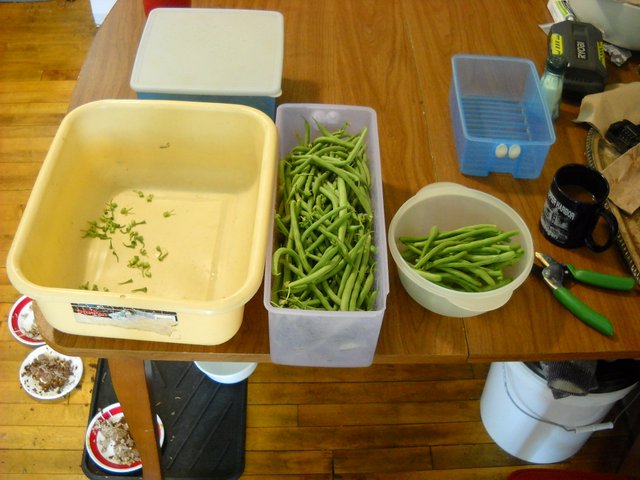
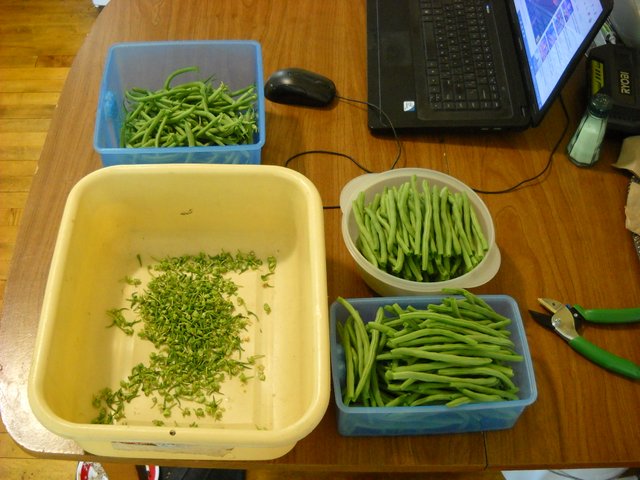
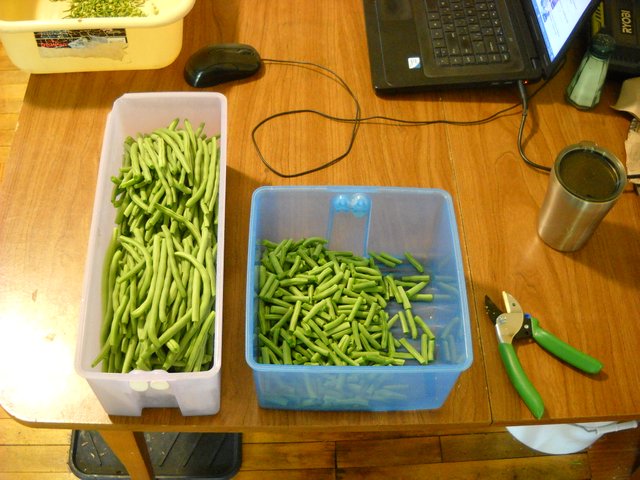
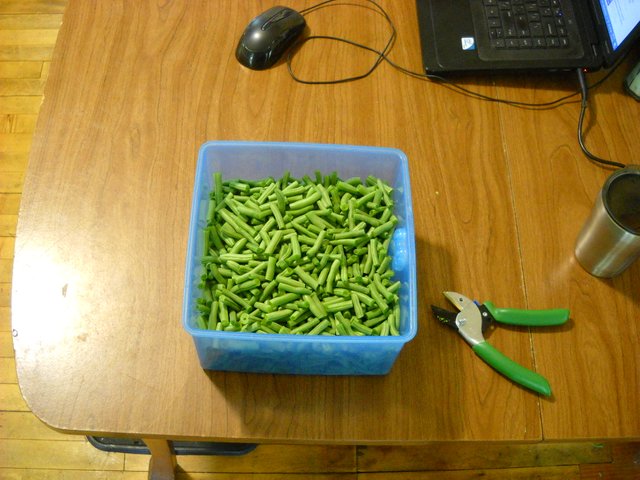
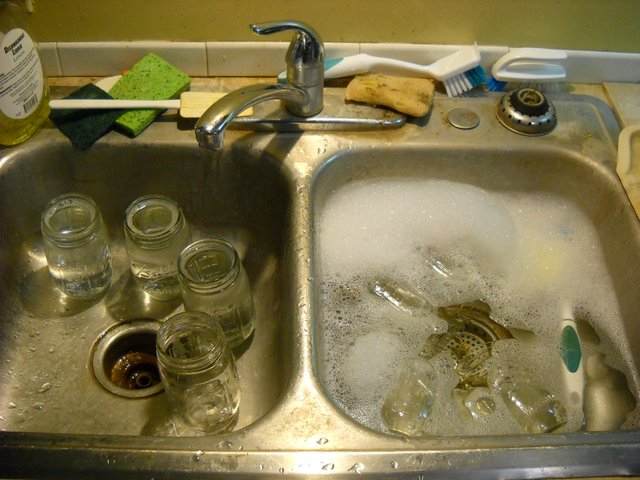
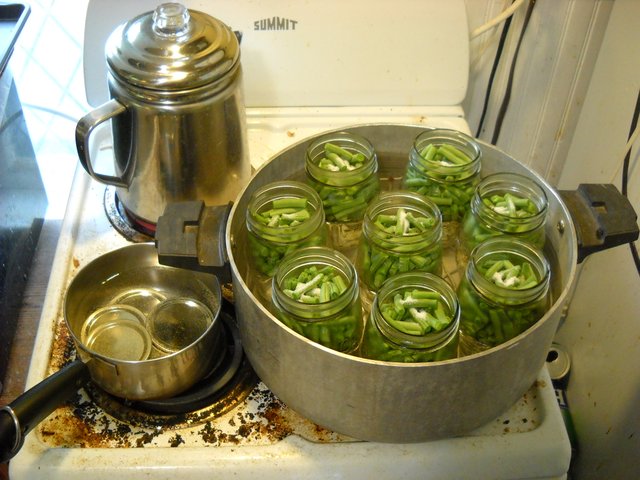
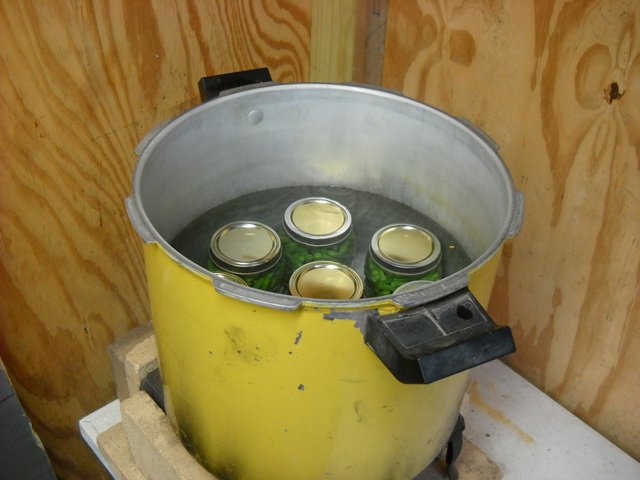
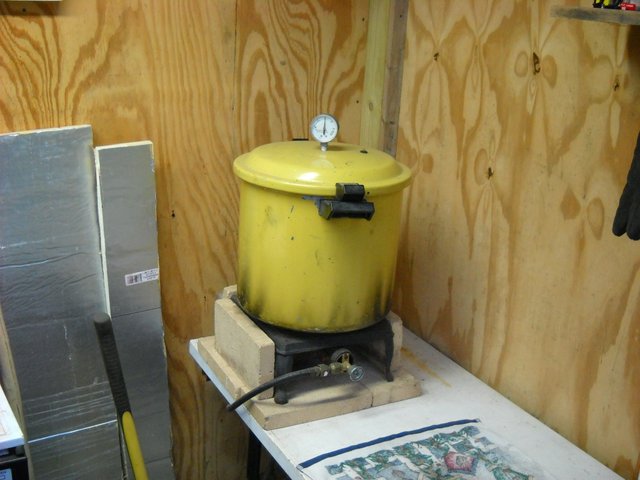
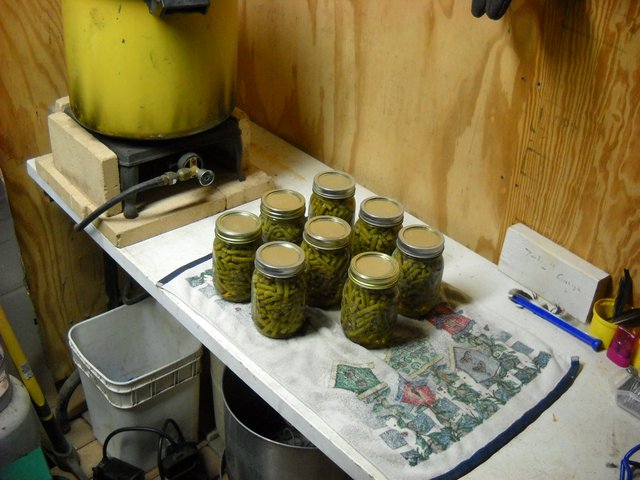
I have included this post in the second edition of Steem Environment Magazine in October 2021, please allow it.
Steem Environment Magazine - October 2021 | Second Edition : Gardening
Regard
Downvoting a post can decrease pending rewards and make it less visible. Common reasons:
Submit
Thank you for including my post!
Downvoting a post can decrease pending rewards and make it less visible. Common reasons:
Submit